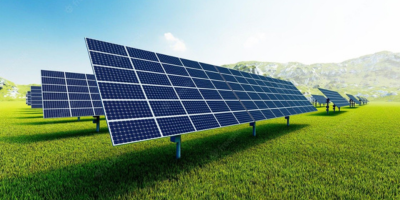As the world moves toward cleaner and more sustainable energy solutions, solar park projects have become a powerful symbol of progress. These large-scale photovoltaic (PV) power stations play a vital role in reducing dependency on fossil fuels and curbing environmental pollution. In this article, we’ll explore what a solar park is, how it works, its benefits, and why it is crucial for a greener future.
What is a Solar Park?
A solar park, also known as a solar farm or solar power plant, is a large area of land equipped with numerous solar panels that convert sunlight into electricity. Unlike residential or rooftop solar panels, these parks generate power on a commercial scale, often supplying electricity to utility grids. Depending on their size and design, solar parks can generate power ranging from a few megawatts (MW) to several hundred MW.
There are two main types of solar parks: photovoltaic (PV) solar parks and concentrated solar power (CSP) parks. PV parks use solar panels to convert sunlight directly into electricity, while CSP systems use mirrors or lenses to concentrate sunlight onto a small area to generate heat, which is then used to produce electricity.
How Does a Solar Park Work?
The operation of a solar park involves a few essential steps:
- Sunlight Absorption: Solar panels, usually made from silicon-based photovoltaic cells, absorb sunlight.
- Conversion of Energy: The PV cells convert sunlight into direct current (DC) electricity.
- Inversion to AC: Inverters transform the DC electricity into alternating current (AC), which is suitable for household and industrial use.
- Transmission: The electricity is fed into the power grid and distributed to homes, businesses, and factories.
These systems also include transformers, batteries for energy storage, and monitoring equipment to ensure efficient functioning.
Advantages of Solar Parks
1. Clean and Renewable Energy
One of the most significant advantages of a solar park is that it produces clean energy with zero emissions. Solar power reduces the need for burning fossil fuels, leading to a decrease in greenhouse gases and air pollutants.
2. Scalable and Cost-Effective
Solar parks can be scaled up or down depending on the land availability and energy needs. Over the years, the cost of solar panels and related technologies has significantly dropped, making large-scale solar projects more affordable than ever before.
3. Job Creation and Economic Development
Developing solar parks stimulates the local economy by creating job opportunities in installation, maintenance, and operations. In rural areas, where these parks are often located, they can bring much-needed development and infrastructure improvements.
4. Energy Security
By investing in solar parks, countries can reduce their dependence on imported fuels and increase their energy independence. It also ensures a more stable and predictable energy supply.
5. Utilization of Unused Land
Often built on barren or unused land, solar parks make productive use of areas that would otherwise remain idle. This makes them especially attractive for arid or semi-arid regions with high solar potential.
Global Examples and Future Potential
Countries like India, China, the USA, and the UAE are leading the way in solar park development. India’s Bhadla Solar Park, spread across 14,000 acres in Rajasthan, is currently the largest in the world, with a capacity exceeding 2,245 MW.
As technology advances, the efficiency of solar panels continues to improve. Coupled with better battery storage solutions, future solar parks will be able to generate and store more power than ever before, ensuring availability even during non-sunny hours.
Conclusion
Investing in a solar park is more than just adopting a green technology—it’s a step toward securing a cleaner, more sustainable, and economically viable energy future. Whether you are a policymaker, investor, or environmentally conscious citizen, supporting solar energy initiatives is a smart and responsible choice.




